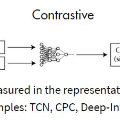Motivated by the increasing application of low-resolution LiDAR recently, we target the problem of low-resolution LiDAR-camera calibration in this work. The main challenges are two-fold: sparsity and noise in point clouds. To address the problem, we propose to apply depth interpolation to increase the point density and supervised contrastive learning to learn noise-resistant features. The experiments on RELLIS-3D demonstrate that our approach achieves an average mean absolute rotation/translation errors of 0.15cm/0.33\textdegree on 32-channel LiDAR point cloud data, which significantly outperforms all reference methods.
翻译:由于最近越来越多地应用低分辨率激光雷达,我们在这项工作中针对低分辨率激光雷达摄像机校准问题,主要挑战有两个方面:点云中的宽度和噪音。为了解决这个问题,我们提议应用深度内插来提高点密度,并监督对比学习以学习耐噪音特性。关于激光雷达-3D的实验表明,我们的方法在32个轨道的激光雷达点云数据上平均实现了0.15cm/0.33的绝对旋转/翻译误差,大大超过所有参考方法。


